Authored by Dr. Barrett
| The thyroid gland, a small butterfly-shaped organ located in the neck, plays a crucial role in regulating various bodily functions. From metabolism to energy production, the thyroid influences nearly every aspect of our health. In this comprehensive guide, we'll explore different thyroid conditions, their symptoms, proper testing, and both conventional and naturopathic treatment options. |
Thyroid Conditions Overview
1. Hypothyroidism
- Definition: Underactive thyroid; insufficient production of thyroid hormones.
- Common Causes: Autoimmune thyroiditis (Hashimoto's), iodine deficiency, medications.
- Symptoms:
- Fatigue
- Weight gain
- Cold intolerance
- Hair loss
- Depression
- Definition: Overactive thyroid; excessive production of thyroid hormones.
- Common Causes: Graves' disease, thyroid nodules, inflammation/recent viral infection.
- Symptoms:
- Weight loss
- Rapid heartbeat
- Anxiety
- Tremors
- Heat intolerance
- Definition: An autoimmune condition causing hypothyroidism.
- Common Features:
- Presence of thyroid antibodies
- Gradual destruction of thyroid tissue
- Fluctuating thyroid hormone levels
- Definition: An autoimmune condition causing hyperthyroidism.
- Common Features:
- Presence of thyroid antibodies
- Overstimulation of thyroid gland
- Increased production of thyroid hormones
- Definition: Abnormal growths or lumps in the thyroid gland.
- Common Causes: Iodine deficiency, inflammation, genetic factors.
- Symptoms:
- Swelling in the neck
- Difficulty swallowing
- Hoarseness
- Pain or discomfort
- Swelling in the neck
Thyroid ConditionS Specifics
Hypothyroidism
Hypothyroidism is a condition characterized by an underactive thyroid, where the thyroid gland fails to produce sufficient thyroid hormones. This condition can manifest due to various factors and affects individuals of all ages, with a higher prevalence in women and older adults.
Common Symptoms of Hypothyroidism:
- Weight gain
- Fatigue
- Cold intolerance
- Constipation
- Hair loss
- Depression
- Dry skin
- Muscle weakness
- Joint pain
- Memory issues
Causes of Hypothyroidism:
Autoimmune Thyroiditis (Hashimoto's):
- The most common cause of hypothyroidism is Hashimoto's thyroiditis, an autoimmune condition where the immune system attacks and damages the thyroid gland. See more details about Hashimoto’s below.
- In regions with insufficient dietary iodine, the thyroid may struggle to produce thyroid hormones, leading to hypothyroidism.
- Individuals who have undergone thyroid surgery or received radioactive iodine treatment may experience a reduction in thyroid function.
- Certain medications, such as lithium and amiodarone, can interfere with thyroid hormone production.
- Some individuals may have congenital conditions affecting thyroid development or function.
- Dysfunction of the pituitary gland, which regulates thyroid function, can result in hypothyroidism.
Diagnosis:
- Diagnosis involves blood tests measuring TSH (Thyroid Stimulating Hormone), Free T3, and Free T4 levels.
- Anti-TPO antibodies and Anti-TG antibodies may be tested to determine if the hypothyroidism is autoimmune (Hashimoto's).
Conventional Treatment:
- Standard treatment involves thyroid hormone replacement therapy, typically with synthetic T4 (levothyroxine/synthroid).
Hyperthyroidism
Hyperthyroidism is a condition marked by an overactive thyroid, where the thyroid gland produces an excess of thyroid hormones. This heightened thyroid activity can arise from various factors and typically affects individuals under the age of 40, with a higher prevalence in women.
Common Symptoms of Hyperthyroidism:
- Weight loss
- Rapid heartbeat
- Anxiety
- Tremors
- Heat intolerance
- Sweating
- Insomnia
- Palpitations
- Bulging eyes (Graves' ophthalmopathy)
Causes of Hyperthyroidism:
Graves' Disease:
- The most common cause of hyperthyroidism is Graves' disease, an autoimmune condition where the immune system stimulates the thyroid to produce excessive hormones.
- Abnormal growths on the thyroid, known as nodules, can lead to an overproduction of thyroid hormones.
- Inflammation of the thyroid, often caused by infections or autoimmune factors, can cause a temporary release of stored thyroid hormones.
- Consuming an excessive amount of iodine, whether through diet or supplements, can lead to hyperthyroidism.
- Certain medications, such as amiodarone, interferon, and lithium, can disrupt thyroid function.
- Dysfunction of the pituitary gland, which regulates thyroid function, can result in excessive thyroid hormone production.
Diagnosis:
- Diagnosis involves blood tests measuring TSH (Thyroid Stimulating Hormone), Free T3, and Free T4 levels.
- Thyroid antibodies, specifically TSI (Thyroid Stimulating Immunoglobulin), are often tested to confirm Graves' disease.
- Imaging studies, such as a thyroid ultrasound or nuclear thyroid scan, may be conducted to assess the size and condition of the thyroid.
Conventional Treatment:
- Conventional treatment includes antithyroid medications (methimazole, propylthiouracil), radioactive iodine therapy, or surgical removal of the thyroid (thyroidectomy).
Hashimoto’s
Hashimoto's thyroiditis, clinically known as chronic autoimmune (lymphocytic) thyroiditis, is an autoimmune condition where the immune system erroneously targets and dismantles the thyroid gland, causing a gradual decline in thyroid function. Hashimoto's is significantly more prevalent in women, occurring seven times more frequently than in men.
Common Symptoms of Hashimoto's:
- Weight gain
- Fatigue
- Cold intolerance
- Constipation
- Hair loss
- Depression
- Heavy periods
- Muscle aches
- Poor concentration
- Dry skin
Some individuals with Hashimoto's experience Hashitoxicosis, characterized by alternating periods of excessive thyroid hormone release and subsequent hypothyroid symptoms, creating a roller-coaster effect.
Contributing Factors to Hashimoto's:
Postpartum:
- Immune system shifts during pregnancy may trigger postpartum Hashimoto's, either transient or permanent.
- Mild iodine deficiency is linked to a lower prevalence of Hashimoto's, while excessive intake is associated with a higher incidence.
- Immune response to substances (e.g., gluten, bacteria) can lead to confusion, resulting in an attack on thyroid tissues.
- Breakdown in the gut barrier allows larger particles into the bloodstream, triggering an immune response.
- A family history of thyroid disease is strongly associated with Hashimoto's, although specific contributing genes are not fully understood.
- Chronic stress, if not managed, may impact cortisol levels, affecting the immune system and contributing to the development of Hashimoto's.
- Excessive radiation to the thyroid increases the risk of thyroid disorders.
Diagnosis:
- Blood work and/or a thyroid ultrasound are used for diagnosis.
- Comprehensive blood work includes TSH, FT3, FT4, Anti-TPO antibodies, and Anti-TG antibodies.
- Elevated antibodies suggest Hashimoto's, even in the absence of abnormal TSH, T3, or T4 levels.
Conventional Treatment:
- Conventional treatment often involves synthetic T4 replacement, with little distinction between Hashimoto's and hypothyroidism.
Grave’s Disease
Graves' disease, an autoimmune disorder, is marked by the immune system mistakenly attacking the thyroid gland, resulting in excessive production of thyroid hormones. Unlike Hashimoto's, Graves' disease leads to hyperthyroidism, causing an overactive thyroid. This condition is more prevalent in women and often manifests in individuals under the age of 40.
Common Symptoms of Graves' Disease:
- Weight loss
- Rapid heartbeat
- Anxiety
- Tremors
- Heat intolerance
- Sweating
- Insomnia
- Palpitations
Individuals with Graves' disease may also experience Graves' ophthalmopathy, characterized by eye-related symptoms such as bulging eyes, double vision, and eye irritation.
Contributing Factors to Graves' Disease:
Genetic Predisposition:
- Family history of thyroid disorders increases the likelihood of developing Graves' disease, indicating a genetic component.
- Similar to Hashimoto's, molecular mimicry plays a role, with the immune system targeting the thyroid due to confusion with external substances, often involving the TSH receptor.
- Chronic stress may contribute to the development of Graves' disease, potentially through its impact on the immune system.
- Certain infections, particularly viral infections, have been linked to the onset of Graves' disease.
- Pregnancy, like in Hashimoto's, can trigger shifts in the immune system, leading to the development of Graves' disease.
- Cigarette smoking has been associated with an increased risk of Graves' disease and exacerbation of symptoms.
Diagnosis:
- Diagnosis involves blood tests measuring TSH, Free T3, Free T4, and thyroid antibodies (TSI—Thyroid Stimulating Immunoglobulin).
- Imaging studies, such as a thyroid ultrasound, may be conducted to assess the size and condition of the thyroid.
Conventional Treatment:
- Conventional treatment often includes antithyroid medications (methimazole, propylthiouracil), radioactive iodine therapy, or surgical removal of the thyroid (thyroidectomy).
Thyroid Nodules
Thyroid nodules are abnormal growths or lumps in the thyroid gland, a common condition that can vary in size and nature. While most nodules are benign, some may raise concerns about thyroid function or the possibility of thyroid cancer.
Common Features of Thyroid Nodules:
- Presence of a palpable lump or swelling in the neck
- Difficulty swallowing or breathing, particularly for larger nodules
- Hoarseness or voice changes
- Occasionally, pain or discomfort in the neck
Causes of Thyroid Nodules:
Iodine Deficiency:
- In regions with low dietary iodine, the thyroid may develop nodules as a compensatory response.
- Inflammation of the thyroid, whether due to autoimmune factors or infections, can lead to nodule formation.
- An enlargement of the thyroid gland, known as a goiter, can harbor multiple nodules.
- Fluid-filled sacs may develop within the thyroid, forming cystic nodules.
- Non-cancerous tumors, such as adenomas, can contribute to nodular growth.
- While most nodules are benign, some may indicate thyroid cancer, necessitating thorough evaluation.
Diagnosis:
- Diagnosis involves imaging studies, such as ultrasound, to assess the size, location, and characteristics of the nodules.
- Fine Needle Aspiration (FNA) biopsy may be performed to extract cells for microscopic examination.
- Blood tests, including thyroid function tests, may aid in assessing thyroid hormone levels.
Conventional Treatment:
- Treatment depends on the nature of the nodules. Benign nodules may be monitored, while interventions such as surgery or radioactive iodine therapy may be considered for larger or suspicious nodules.
Naturopathic Approaches to Thyroid Health
Thyroid Health in General
Dietary Interventions: A cornerstone of our treatment involves advocating for a high-antioxidant diet abundant in vegetables. Nourishing the body with these vital nutrients supports overall health and specifically targets the oxidative stress often associated with thyroid disease.
Health Foundations: We ensure that patients have a solid foundation of health including proper sleep, hydration, physical activity and rest time.
Nutrient optimization: We test our patients for nutritional status such as vitamin D, ferritin and other synergistic nutrients/hormones that are necessary for proper thyroid function.
Herbal medicine: We may utilize specific herbs to support thyroid health such as ashwagandha, guggul and bladderwrack.
Autoimmune Thyroid Diseases
Digestive Health: We work to identify and heal any intestinal permeability and foster a healthy balance of flora in the gastrointestinal tract. This holistic approach acknowledges the interconnectedness of gut health and immune function.
Identify Triggers: We look for factors that may contribute to autoimmune disease such as the Epstein Barr Virus, dysbiosis, food sensitivities such as gluten, and heavy metal exposure.
Mind-Body Medicine: Recognizing the impact of stress on autoimmune disease, our approach incorporates mind-body medicine. We assess stressors, analyze stress responses, and explore somatic manifestations. Questions about the ability to express one's truth are posed, acknowledging the proximity of the thyroid to the voice box and its potential role in stress-related dysfunction.
Herbal Medicine: We utilize herbs that reduce thyroid function in hyperthyroid states such as Grave’s disease.
Nutritional Support: We tailor nutritional needs to each patient but some examples include carefully monitoring iodine intake in Hashimoto’s patients to avoid excess, enhancing selenium intake to support a healthy immune response, and ensuring optimal nutrient intake to support phase II liver detoxification (high sulfur foods for example).
Collaboration with a Naturopathic Doctor: For those navigating Hashimoto's or Grave’s Disease, we recommend collaborating with a naturopathic doctor. Identifying the root causes of autoimmune diseases and tailoring treatment to individual needs are central to our philosophy. Together, we strive to restore balance and enhance overall well-being. With Grave’s disease we also recommend working with an endocrinologist.
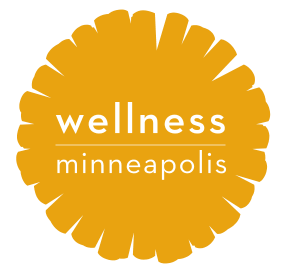

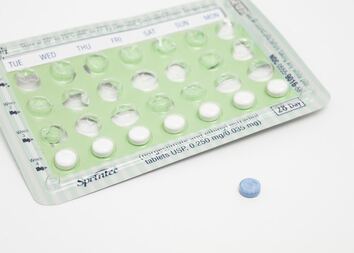
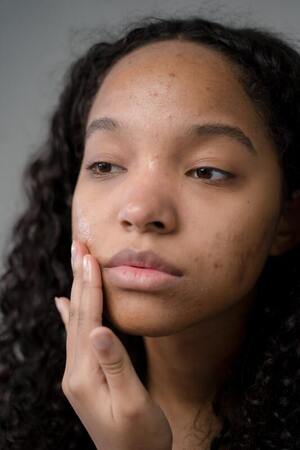
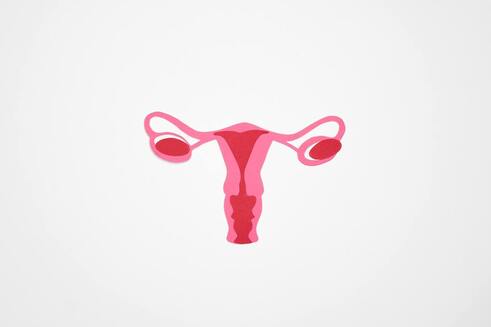
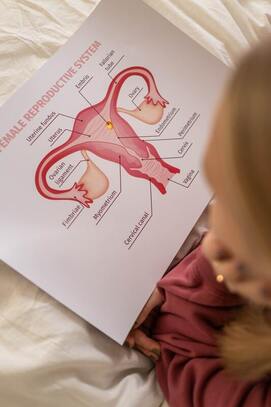
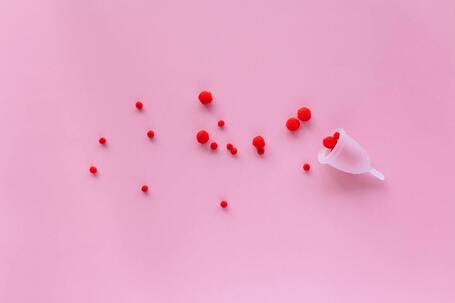
 RSS Feed
RSS Feed